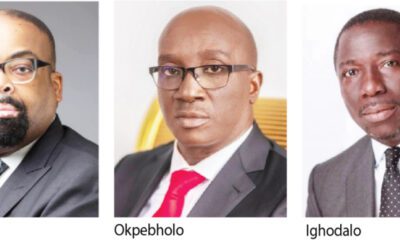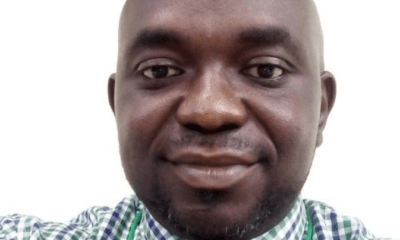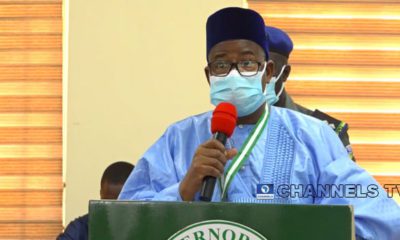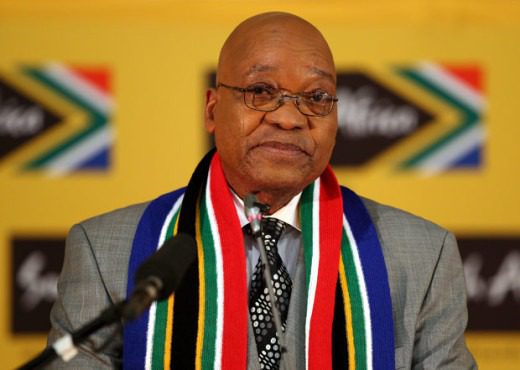National Issues
Starting the Arrest of Highly Suspect Judges in Homes, Chambers, Residences, Highways, VIP Clubs, Churches, Hospitals, Shopping Centers, Mosques, Fitness Centers, Tennis Clubs, and Beyond: Exposing Their Misdeeds Through Images -By John Egbeazien Oshodi
Regrettably, in the Nigerian context, the effectiveness of disciplinary actions against judges who engage in such misconduct has often been questioned. The Nigerian judicial system has faced numerous challenges in ensuring a robust system of judicial accountability. Issues such as bureaucratic hurdles, political interference, and a lack of transparency have hindered the effective implementation of disciplinary measures.
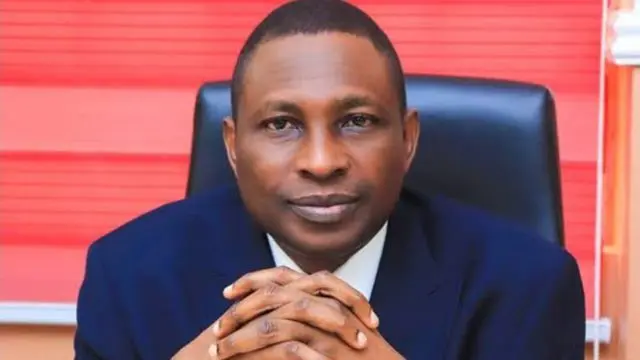
In a nation grappling with the scourge of corruption, the very bastion of justice, our judiciary, finds itself facing a disturbing dilemma. The alarming revelation of corrupt judges and their collusion with compromised lawyers threatens to erode the trust in our legal system. While cases may find their way into courtrooms, the presence of these bad actors casts a long shadow over the pursuit of justice. It is a clarion call for a different form of action, one that involves not just legal proceedings, but a powerful weapon: exposure.
This unsettling revelation came to light during a one-day dialogue on “Youth, Religion, and the Fight against Corruption,” hosted at the Musa Yar’Adua Centre in Abuja. Ola Olukoyede, the Chairman of the Economic and Financial Crimes Commission (EFCC), delivered a shocking exposé, laying bare the sinister involvement of a religious sect in Nigeria in the abhorrent act of laundering money for terrorist organizations. The gravity of this revelation sent shockwaves throughout the nation, igniting a sense of urgency in addressing corruption within our institutions.
The involvement of the judiciary in these corrupt practices underscores the extent to which corruption has permeated our society. It strikes at the very heart of justice and erodes the public’s faith in the legal system. While the judiciary is meant to be the guardian of justice and the rule of law, the presence of corrupt judges undermines its credibility. How could a judge issue a restraining order on a law enforcement investigation, unheard of but sadly not unusual in a hopelessly corrupt environment?
However, the problem goes beyond corruption within the judiciary. It extends to the judiciary’s ability to self-regulate and hold its members accountable. In a normal and well-functioning society, judges who intentionally issue restraining orders to obstruct or delay investigations would face disciplinary actions from within the judicial system. Such actions are necessary to maintain the integrity and trustworthiness of the judiciary and to ensure that judges uphold the rule of law and impartiality.
Regrettably, in the Nigerian context, the effectiveness of disciplinary actions against judges who engage in such misconduct has often been questioned. The Nigerian judicial system has faced numerous challenges in ensuring a robust system of judicial accountability. Issues such as bureaucratic hurdles, political interference, and a lack of transparency have hindered the effective implementation of disciplinary measures.
Many would assume that the Nigeria Bar Association (NBA) should consistently uncover unethical judges and take disciplinary measures. However, this expectation has been marred by internal leadership disputes within the NBA. With the emergence of alternative legal membership societies, there is optimism that these organizations will take a more proactive approach in addressing the misconduct of corrupt judges. The collective efforts of these alternative associations and societies, as well as the NBA and other stakeholders, are vital in safeguarding the judiciary’s credibility and upholding the principles of justice and the rule of law.
It is evident that the National Judicial Council (NJC), characterized by insiders as marred by nepotism and led by Chief Justice of Nigeria (CJN) Olukayode Ariwoola, who appears indifferent to complaints about his failed leadership, has failed to take robust action against corrupt judges.
In addition to arresting suspicious judges, it’s equally important to arrest suspicious lawyers or legal practitioners who may be complicit in corrupt activities, especially those defending these corrupt judges. This comprehensive approach ensures that all individuals involved in undermining the integrity of the legal system face accountability.
Therefore, not only should corrupt judges be arrested and exposed through images, but any lawyers or legal practitioners found to be aiding or abetting corruption should also face the same consequences.
The digital age provides an ideal platform for this exposure. Social media, with its vast reach and rapid dissemination, becomes a crucial battleground. Images of these judges, accompanied by their names and allegations of corruption, should flood platforms like Twitter, Facebook, Instagram, and LinkedIn. The power of viral sharing cannot be underestimated; it amplifies the message and ensures that it reaches every corner of society.
Physical spaces, too, must bear witness to this exposure. Posters, billboards, and public bulletin boards in courthouses, government buildings, universities, and community centers should carry these images. Public awareness campaigns should be launched, ensuring that pamphlets and materials with the information find their way into the hands of citizens.
Television and radio broadcasts play a significant role in reaching those who may not be digitally connected. Collaboration with news channels and radio stations can result in news segments and broadcasts that put these judges and their misdeeds in the spotlight.
Government websites related to law enforcement agencies, the judiciary, and anti-corruption bodies should prominently feature this information, affirming the commitment to transparency and accountability.
Additionally, press releases should be distributed to media outlets, ensuring that they have access to accurate and up-to-date information for reporting.
As these images are disseminated far and wide, captions should accompany them, driving home the message of accountability. For example, “Judge John Jay is currently a suspect for corrupt acts pending further investigation.” These captions serve as constant reminders of the consequences of corruption within the judiciary.
The overarching goal of this bold and eye-catching campaign is to ensure that the exposure of corrupt judges is not limited to the confines of legal proceedings. The psychological and societal repercussions should be severe enough to deter future misconduct and to send a resounding message that such behavior will not be tolerated.
It is frustrating that judges have, for a long time, used restraining orders to obstruct investigations in Nigeria. It’s time to break this pattern, arrest them, and expose their names. This approach is strongly needed, as judges often protect each other within a corrupt system, creating a wall of impunity. It is a call to action, a demand for accountability, and a pledge to uphold the integrity of our justice system. It is a declaration that justice is not just blind; it is watchful, vigilant, and unyielding in the face of corruption. It is a promise to the people that their faith in justice will not be betrayed, and those who seek to undermine it will face the unrelenting power of exposure.
The EFCC’s revelation is a stark reminder that no one, regardless of their position or affiliation, should be allowed to undermine the fight against corruption and terrorism. The time for passive tolerance of such heinous acts is over. It’s time to start arresting and exposing these judges who betray the trust placed in them and bring them to justice for the greater good of our society.
When judges who compromise the integrity of the judicial system face the full brunt of media scrutiny, it sends a clear message that no one is above the law, and that justice will prevail. The exposure of their actions not only shatters their reputation but also serves as a stark reminder of the consequences that await those who betray the trust of the public.
In a normal and well-functioning society, judges who intentionally issue restraining orders to obstruct or delay investigations would indeed face disciplinary actions from within the judicial system. Such actions are necessary to maintain the integrity and trustworthiness of the judiciary and to ensure that judges uphold the rule of law and impartiality. Unfortunately, this is not always the case in Nigeria’s judicial system, where the effectiveness of disciplinary actions against errant judges has often been questioned.
In this era of rapid information dissemination, the media holds a pivotal role in holding individuals accountable for their actions, and its influence can profoundly impact the collective consciousness of society. It serves as a beacon of commitment to a just and transparent society where the rule of law prevails over corruption and impunity.
Given the sometimes-corrupt nature of the judiciary, there are valid concerns that even if these judges are apprehended, they might evade justice through legal maneuvering. However, what truly matters is the psychological and media disgrace that accompanies their arrest. It’s time to apprehend these judges, whether at their homes, chambers, or residences, and subject them to public scrutiny.
Hence, it is not merely necessary but imperative that the names, faces, and actions of those judges involved in obstructing justice are brought into the public domain through the media. This endeavor not only upholds the principles of accountability but also acts as a potent deterrent, dissuading others from treading a similar path of corruption and abuse of power. The media’s role in exposing these individuals is pivotal, serving as a watchdog for accountability and reinforcing the bedrock principles of transparency and the rule of law.
The act of exposure, in this context, carries a psychological weight that can be even more influential than legal consequences alone. It entails the public disgrace of those who have betrayed the sacred oath of their profession. The overarching goal is to ensure that their misdeeds no longer hide behind the closed doors of courtrooms but are displayed for all to witness, sparking a sense of collective responsibility and outrage within society.
The use of images becomes paramount in this endeavor. Images have the unique ability to transcend language barriers, capturing attention and conveying messages with incredible immediacy. By capturing the faces of these suspicious and corrupt judges, we strip away the anonymity that has allowed them to operate in the shadows. A face, once associated with acts of corruption, becomes a symbol of betrayal to the very ideals of justice that they were sworn to uphold.
Social media, with its vast reach and lightning-fast dissemination, becomes a crucial battleground. Images of these judges, accompanied by their names and allegations of corruption, should flood platforms like Twitter, Facebook, Instagram, and LinkedIn. The power of viral sharing can’t be underestimated; it amplifies the message and ensures that it reaches every corner of society.
But the digital realm is not the only arena. Physical spaces, too, can bear witness to this exposure. Posters, billboards, and public bulletin boards in courthouses, government buildings, universities, and community centers should carry these images. Public awareness campaigns should be launched, ensuring that pamphlets and materials with the information find their way into the hands of citizens.
Television and radio broadcasts play a significant role in reaching those who may not be digitally connected. Collaboration with news channels and radio stations can result in news segments and broadcasts that put these judges and their misdeeds in the spotlight.
In the battle against corruption and the erosion of justice, it’s time for a resolute and unyielding approach. Government websites related to law enforcement agencies, the judiciary, and anti-corruption bodies should prominently feature this information, affirming the commitment to transparency and accountability. The very institutions tasked with upholding the rule of law must lead by example, showcasing their dedication to rooting out corruption within their ranks.
Press releases should be distributed to media outlets, ensuring that they have access to accurate and up-to-date information for reporting. The media plays a pivotal role in disseminating this message far and wide, acting as a watchdog and amplifying the call for accountability. The exposure of corrupt judges should not be hidden from the public eye; it should be front and center in public discourse.
Moreover, consider distributing pamphlets or materials with information at public events, conferences, or gatherings related to justice and anti-corruption. Engage the broader community in the conversation, making it clear that this issue affects every citizen. Send press releases to media outlets to ensure that they have access to the information for reporting, reinforcing the message that transparency and accountability are non-negotiable.
In the physical realm, consider posting copies of the information on public bulletin boards in courthouses, government buildings, universities, and community centers. Make sure that these images are not confined to the digital world; they should be a constant presence in the physical spaces where justice is administered. Coordinate with television news channels to feature the information in news segments and broadcasts, and share it through radio broadcasts, especially on news and talk show programs. For local dissemination, include the information in community newsletters or local publications. The message should reach every corner of society.
As these images are disseminated far and wide, captions should accompany them, driving home the message of accountability. For example, “Judge Gadoqwi Godazia is currently a suspect for corrupt acts pending further investigation.” These captions serve as constant reminders of the consequences of corruption within the judiciary.
The overarching goal of this bold and eye-catching campaign is to ensure that the exposure of corrupt judges is not limited to the confines of legal proceedings. The psychological and societal repercussions should be severe enough to deter future misconduct and to send a resounding message that such behavior will not be tolerated.
It is frustrating that judges have, for a long time, used restraining orders to obstruct investigations, delay tactics, judicial overreach in Nigeria. It’s time to break this pattern, arrest them, and expose their names. It matters not if they are convicted or not, which is often unlikely, but the psychological shame is what counts. This approach is strongly needed, as judges often protect each other within a corrupt system, creating a wall of impunity. It is a call to action, a demand for accountability, and a pledge to uphold the integrity of our justice system. It could act as deterrence. It is a declaration that justice is not just blind; it is watchful, vigilant, and unyielding in the face of corruption. It is a promise to the people that their faith in justice will not be betrayed, and those who seek to undermine it will face the unrelenting power of exposure.

Professor John Egbeazien Oshodi, born in Uromi, Edo State, Nigeria, is an American-based police and prison scientist, forensic psychologist, and legal psychologist. He’s a government advisor on forensic-clinical psychological services in the USA and the founder of the Dr. John Egbeazien Oshodi Foundation for Psychological Health. With a significant role in introducing forensic psychology to Nigeria through N.U.C. and Nasarawa State University, he’s also a former Secretary-General of the Nigeria Psychological Association. He’s taught at esteemed institutions like Florida Memorial University, Florida International University, Nova Southeastern University, and more, and is currently an online faculty member at Weldios University, Nexus International University, and Walden University. John.Oshodi@mail.waldenu.edu



